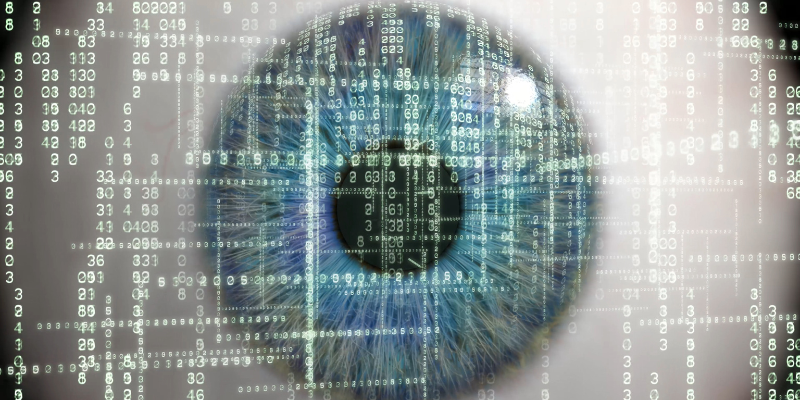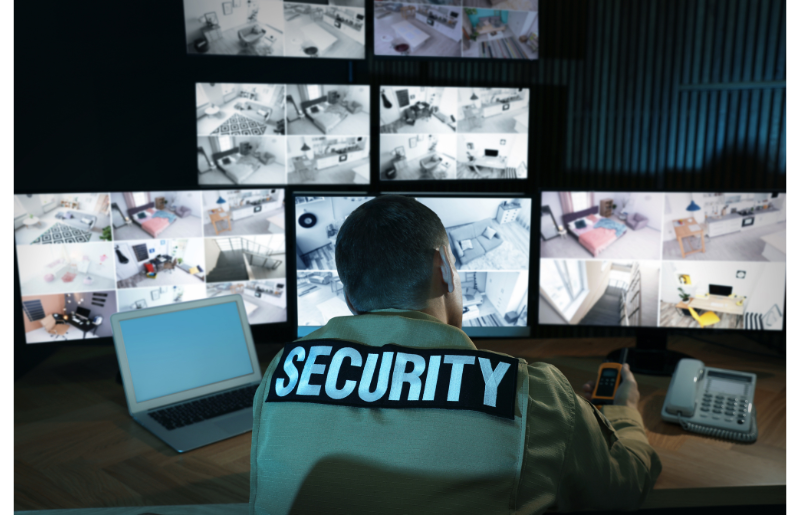The sheer volume of video content being produced and consumed on a daily basis is mind-boggling. According to Statista, 500 hours of video are uploaded to YouTube every minute!
Obviously, it’s daunting for media analysts to make sense of it all.
Fortunately, advancements in artificial intelligence (AI) have led to the development of powerful video analytics tools that extract valuable insights from videos accurately and effortlessly.
In this article, we’ll introduce you to the best AI-based video analytics tools on the market today and show how you can use them to improve your media analysis.
What Are AI-Based Video Analytics Tools?
AI-based video analytics tools use progressive CV (Computer Vision) and machine learning technologies to extract meaningful information from videos of all formats.
Ideally, these tools use a set of complex algorithms that scan videos pixel-by-pixel and detect activities, objects, and events happening in live or recorded videos.

You can learn about the objects, movements, emotions, and everything the algorithms can pick. In fact, video analytics tools are flexible on how you train the algorithms or even build custom models to fit your business needs.
Suppose you want to identify inappropriate/offensive content in published or AI UGC videos. You can build custom AI models on set guidelines describing what makes content objectionable or inappropriate for your business. Then, run the model across video files to detect anomalies.
The analytics work on two core principles:
- Motion detection: examines each pixel, detecting every movement of objects in the video
- Object recognition: identify and monitor objects, recognize objects that have moved, gone, or are new
Essentially, high-end video analytics is used in security and surveillance systems to detect and alert potential threats, people, or abnormal behavior.

Video analytics are widely used across industries and offer versatile services catering to individual business needs.
However, recently the software is becoming increasingly popular among businesses and media houses.
With the increase in demand for video content, brands are leveraging AI-based video analytics tools to:
- Identify visual mentions
- Pull out audience insights
- Exploit user-generated content
- Find fake brand logos or counterfeit merchandise
And much more.
So, technically, the use cases of AI-powered video analytics tools have been evolving ever since.
Benefits of Using AI-Based Video Analytics Tools
#1. In-Depth Analysis
Advanced video analytics tools can analyze video streams to a depth impossible for human eyes to achieve.
You see, a human brain can process images that the eye sees for as little as 13 milliseconds.
In this short time frame, we don’t expect a human to get hold of every detail or conflict in streaming videos. But we can definitely expect AI to do so.

AI-powered video analytics tools examine streaming or recorded video frame-by-frame rather than looking at it as a whole. The granular approach allows them to detect, track, and classify objects in a scene.
This level of detail can be crucial in identifying security threats and suspicious behavior.
#2. Increased Efficiency and Productivity
A major part of the video analytics process accompanies automation. From analyzing videos to collecting and storing insights, the tools do it all.
Ideally, it would have taken several hours and a sizable workforce to perform these activities regularly. And even after hours of work, you wouldn’t be able to get the insights that AI would provide.
Let’s get this with an example. You own a brick-and-mortar store and have set up a control center to analyze your store’s surveillance feed.

Without video analytics tools, your surveillance team would end up staring at the screen 24*7.
But with video analytics combined, your team can do much better in gathering insights such as:
- Ideal footfall
- Customers demographics
- Repeat customers
- Wait time at the billing counter
- The most engaged section in the store
Having so much data already extracted by analytics tools leaves you focusing on the core tasks, like using insights to build strategies and enhance user experience in your retail outlet.
#3. Hassle-Free Content Moderation
With the boom in content creation, keeping an eye on user-generated content is tough.
AI-powered video analytics tools help you sweep through hours of video content in minutes.
The best part is you can train the algorithm with specific compliance guidelines. If content fails to comply with the set guidelines, the tool can detect them in seconds.
For the most part, video analytics tools can help businesses:
- Detect fake brand logos
- Brand mentions (text/audio/logo)
- Detect offensive content
Besides, closely monitoring video content is crucial for media houses. It prevents them from getting into legal brawls for unauthorized brand mentions or surfacing offensive content under their brand name.
#4. Real-Time Alerts and Notifications
In the event that the algorithm detects something unethical, the software can be configured to send out alerts and notifications.
This allows content moderators to take immediate action to address the alert. You may configure the alerts for anything: fake logo detection, obsolete content, brand mentions, etc.
Real-time alerts are vital in time-sensitive situations, primarily in the security sector. Most importantly, you can also set event-based actions that trigger automatically if the algorithm senses a breach.
For example, sirens could be sounded throughout the building if there is a fire, or the police could be called if there is a break-in.
The owner, security staff, and others will receive an e-mail or a notification automatically without human intervention.
Here are some amazing AI-based video analytics tools for better media analysis.
Amazon Rekognition
Amazon Rekognition is a powerful video analytics software that comes along with pre-trained and customizable computer vision APIs. It uses deep learning technology to perform facial recognition, object detection, and image analysis.
Key Features
- Embed Rekognition moderation APIs in social media and advertisements to detect inappropriate/offensive content and create a user-friendly, legally accepted media
- Leverage RekoRekognition’se detection technology on images or videos to identify facial attributes such as eyes open or closed, emotion, age, gender, etc
- Use storage-based APIs to create a collection of faces detected on various images or videos; use the collection to perform face match and search operations.
- Detect and extract text from images and videos, making it useful for applications such as license plate recognition and document analysis
- Easily identify labels and scenes in images and live video streams, such as vehicles, buildings, and landscapes
Rekognition is trusted by the likes of Pinterest, PBS, and more. Undoubtedly, it’sit’sersatile tool with a wide range of applications in various industries, including security, media, and advertising.
Google Cloud Video Intelligence
GooglGoogle’so AGoogle’Video simplifying video analysis and media management. Its pre-trained models can recognize over 20,000 objects, activities, and scenes in stored and streaming videos.
Key Features
- Easily surf through petabytes of video data to identify and filter explicit or inappropriate content necessary for content moderation and compliance
- Built-in shot change analysis to detect shot changes in a stored or streaming video in real-time
- Identify appropriate locations or time-frames in videos to insert ads that are contextually relevant to the video content
- Extract rich metadata by identifying objects, activities, and scenes in videos and use them to enhance search and discovery
- Has Text Detection that uses Optical Character Recognition (OCR) to detect and extract text within an input video
Using Video AI, you can automatically transcribe speech to text and generate captioning and subtitles from videos. Additionally, video AI also has face detection and person detection models that are in the beta stage.
Video Indexer
Video Indexer is a cloud-based video analytics tool by Microsoft Azure. It helps you easily extract insights from audio and video files using media AI to improve accessibility, searchability, and overall user experience.
Key Features
- Video Indexer extracts a wide range of metadata from videos, including spoken words, closed captions, tags, and transcripts
- Has an AI-based video editor that allows you to create new media from existing content; easily cut out clips from videos and stitch them together using the editor
- Integrates with other Microsoft services, including Azure Cognitive Services, Power BI, and SharePoint
- Fine-tune recommendation algorithm based on objects and people that appear in a video
With the Video Indexer, privacy and security are no more a myth. It has over 3,500 security experts dedicated to protecting your data and privacy. The platform also has state-of-the-art certifications, making it perfect for innovative applications in various industries.
Clarifai
Clarifai offers full motion video analysis with the help of computer vision and AI. The tool is inclined toward situation awareness and object detection, making it suitable for surveillance and security purposes.
Key Features
- Detects specific actions taking place in the video, like a pattern or individual behavior, to better understand how customers interact with products
- Uncover insights from unstructured data; detect anomalies in real-time for making faster field decisions and supporting ISR military projects
- Combine full motion video data with AI to improve response time; detect damaged areas or search for people in near real-time
- Built-in audio recognition technology to detect and transcribe speech, recognize music, and identify other sounds
Clarifai provides top-tier video analysis support to the world’s best teams world’s, Canva, Nvidia, and more. Besides, you get 1000 free monthly operations when starting with Clarifai.
Lumeo
Lumeo is a no-code custom video analytics platform that allows anyone to make the most out of video content with easy drag-and-drop tools and pre-built analytics building blocks.
Key Features
- Has 100s of ready-to-use AI models, tools, and connectors, allowing to use Lumeo for a variety of use cases without lifting a finger
- Simple plug-and-play function to integrate the software with existing camera and video management systems effortlessly
- Full set of REST APIs and programmable Python nodes so you can easily build custom integrations
- Built-in collaboration feature for developers, solution engineers, and implementation teams to deliver solutions faster
Lumeo is an all-in-one video analytics platform. Its intuitive design and ready-made AI models allow anyone to make full use of top-edge analytics without learning any technical jargon.
Use Cases of Video Analytics Tools
As we said, the use cases of video analytics tools are plenty. However, we will stick to three major industries–healthcare, security, and retail– to see how they use video analytics.
Healthcare
The University at Buffalo developed a smartphone application designed to help detect autism spectrum disorder (ASD) in children. The app works on the principle of motion detection (the core of video analytics).

Using the smartphone camera, the app tracks the facial expression and gaze attention of a child looking at pictures of social scenes (showing multiple people).
The app monitors eye movements and can accurately detect children with ASD since their eye movements are different from those of a person without autism.
Retail
Amazon Go is a first-of-its-kind grocery store that allows customers to check out of the store without waiting in long billing queues. It does so by charging customers automatically according to what they grab from the shelf.

Amazon claims that every time a customer grabs an item from a shelf, the item is instantly added to their online account shopping basket. When buyers return an item to the shelf, Amazon removes it from their virtual cart.
Although Amazon doesn’t say much about the technology it uses, it does say the tech involves high-end computer vision and machine learning models combined with several sensors inside the store that let Amazon make confident decisions when it comes to charging users for their purchases.
Security
According to reports, a person in London is likely to be caught on a security camera over 300 times a day, while an American citizen can be caught on camera more than 75 times per day!

So, humanly, it’s impossible to keep track of faces and abnormalities in heavily crowded places. Video analytics tools, however, can do it for you 10X faster and more accurately than human supervisors.
No, we’re not saying you can lay off existing watchers or surveillance guards, but these tools can be a rightful assistant to doing the job more effectively and productively.
Conclusive Thoughts
AI-powered video analytics are no longer ‘techie talk.’ It’s been used in marketing, sales, customer service, and other business roles.
The fact that video analytics can save countless hours and deliver actionable insights has led to its wider acceptance across industries. In this article, we’ve tried to cover every possible aspect of AI-based video analytics.
Next, you may be interested in knowing why video marketing is important for your business.






